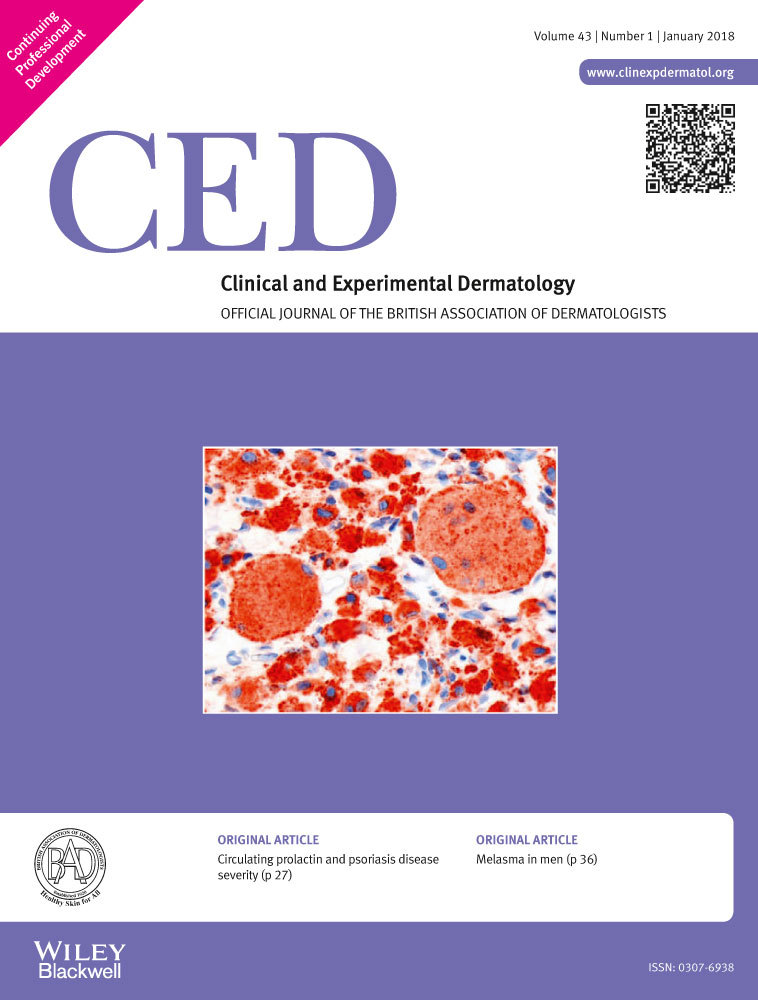Association between circulating prolactin levels and psoriasis and its correlation with disease severity: a meta-analysis
Summary
Background
Studies that have compared circulating prolactin (PRL) levels in patients with psoriasis and healthy controls (HCs) and determined the relation between PRL levels and psoriasis severity have shown mixed results.
Aim
To evaluate the association between circulating PRL levels and psoriasis, and between serum/plasma PRL levels and psoriasis severity.
Methods
We performed a meta-analysis comparing serum/plasma PRL levels in patients with psoriasis with those of HCs, and examined the correlation coefficients for circulating PRL levels and psoriasis severity based on Psoriasis Area and Severity Index (PASI).
Results
In total, 12 studies assessing 446 patients with psoriasis and 401 HCs were included. PRL levels were significantly higher in the psoriasis group than in the HC group [standardized mean difference (SMD) 0.54; 95% CI = 0.18–090; P < 0.01). Stratification by age and sex revealed a significantly higher PRL level in the psoriasis group (SMD = 0.53; 95% CI = 0.15–0.91; P < 0.01). Subgroup analysis by sample size showed a significantly higher PRL level with larger sample sizes (n ≥ 80) (SMD = 0.51, 95% CI = 0.07–0.95, P = 0.02), but not with smaller sample sizes (n < 80) in the psoriasis group. Stratification by sample type revealed a significantly higher level of PRL in the sera, but not plasma of the psoriasis group. Meta-analysis of the correlation coefficients showed a positive, although not statistically significant, correlation between circulating PRL levels and PASI (correlation coefficient = 0.48, 95% CI = −0.05 to 0.80, P = 0.08).
Conclusion
Circulating PRL levels are higher in patients with psoriasis, and PRL levels may correlate with psoriasis severity.




